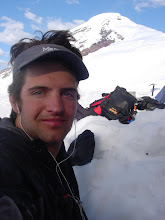A few months ago I made the trip out to the Hannegan Farm store to pick up our bee order (another story). Shannon had warned me not to come home with any chicks. She should have known better. Our little flock of layer are doing great, the chicks I was interested in were destined for the table.
The kids of course were ecstatic, at least until the baby ducks arrived in the mail a few days later, which might have had something to do with Shannon's warning. I wasn't too worried though, if we were already going to be feeding a set of small birds a few more wouldn't be so bad. I only bought 10.
Meat birds have been on my radar for a long time. It's so incredible to be at a place in life with our house under control, and space in the yard to take on so many of the food and urban-steading projects that have intrigued me for years. Standard table fare is so far from the killing and butchering of animals. A great gulf separates the consumer from the death, blood, and carnage that is slaughtering. Yet our consumption of animals is really an active acceptance of the industrialization of killing. It became so so clear how and why the industrial mechanized labor models have swallowed up the meat packing industry. I have know this for a long time, but I this knowledge became experience spending an entire afternoon even with knife, killing cones, a scalder and a plucker, it process 13 birds. It is so easy for each step, killing, bleeding, plucking, gutting, severing, cleaning, and packaging to be differentiated. Stopping to consider the sheer scale of consumption of meat and the subsequent demand there is no wonder that the economies of efficiency and scale dominate the industry. Of course, there are the externalities with such systems.
Slaughtering our own birds was an education. Born from a desire to appreciate and have control over the food we consume. It was also about community, friends and family sharing in a process that for thousands of years was elementary and fundamental to survival. Yet here we were, the educated and privileged, ignorant of such a fundamental skill, how to kill and prepare our food. Blood and gut juices dripped from our hands and onto the pages of the book, diagraming what we were to do. But, we figured it out. While those first birds were painfully slow, gruesome, and humbling we learned to decode the mysteries of organ meats, we located and removed the foul glands, we raked the inner cavity of the lifeless carcass with our fingernails removing the last bits of lungs and connective tissues. We became the processing system. Feather, entrails, feet, and lifeless chicken heads filled our curbside "Food Plus" bin and clean fresh chicken filled our freezer. It was a horribly uneconomical process, but one that I will do again.












